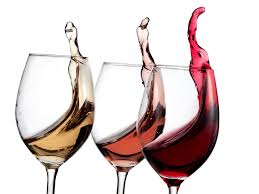Are you an expert at wine tasting or would you like some wine tasting tips? Wine tasting can be taught so, here are some great tips. There are five basic steps in tasting wine: color, swirl, smell, taste, and savor. These are also known as the “five S” steps: see, swirl, sniff, sip, savor. Cheap, processed wines that have added sulfites and are not true wines cannot compare to a True Fine Wine.
Aspects of Wine Tasting
Don’t wear perfume or cologne when wine tasting because it interferes with the ability to taste the subtle nuances and interferes with the aroma of the wine. It also interferes with other people’s experience as well. You want to smell the wine alone.
Go into the tasting with an open mind so you don’t have a pre-conceived preference. If you only drink a red wine, you may miss an outstanding white wine. Judge each wine as a distinct wine that requires your full attention.
The order of Wine Tasting
Most experts agree that the White wines are the first to taste, followed by Red wines, and then Dessert wines. Therefore, in order to get the best experience and also receive the gratification from the tasting, you should follow these recommended rules.
- Sparkling Wine First – Sparkling wines like Champagne are first. (well chilled) 6 °C (43 °F) to 10 °C (50 °F)
- White – This is important for the flavor of the wine. (chilled) 7 °C (45 °F) to 10 °C (50 °F)
- Dry before Sweet – The sweetness will cause the drier wine to become too acidic.
- Light Body before Heavy Body – It’s harder to taste a Pinot Noir after a heavy Cabernet.
- Young before Old – In general, go young before old because as wine ages it continues to change and develop new and more diverse flavors and smells. Get Fine Wines aged to perfection.
Taste Wine in 5 Easy Steps
Color of the wine
Look at the color of the wine by holding the glass up toward the light. Look at its clarity and the depth and range of the color. The wines will vary in intensity primarily depending on how long the wine was in contact with the grape skins. Due to the fact that the skins impart most of the color. Additionally, the color change can come from wood if fermented in wooden barrels, especially with white wines.
Swirl the wine
Swirl the wine gently in a smooth circular motion. When a wine is swirled, literally hundreds of different aromas are released, the subtlety of which can only be detected with the nose.
Smell the wine – Aroma
Smelling your wine is an important part of the tasting ritual. As they say, the nose knows!! Stick your nose deep into a glass (so don’t fill it too high) and inhale deeply, then angle the glass this way and that to continue to assess the wine’s aromas. Primary aromas come from the grapes — the various fruits, herbs, flowers, vegetables and spices. Secondary aromas derive from the fermentation process — earth, smoke, rocks. And tertiary aromas develop from aging — oak, oxidation and the complex flavors that develop in the bottle as a wine transforms over years in the cellar.
Wine Tasting the wine
After smelling the wine, it is time to take a sip. Coat your mouth with a larger sip of wine followed by several smaller sips so that you can isolate and pick out flavors. Roll it over your tongue for several seconds before swallowing. Exhale through your nose before you swallow. If you are going to be tasting several wines, it is probably best to spit rather than swallow to avoid getting too buzzed! Your taste buds and sense of smell will work together to identify familiar aromas. On the second sip try swishing the wine around in the mouth and then swallow and exhale through your nose. With practice you could be able to blind taste a wine down to the style, region and even possible vintage!
Savor the wine
Great wines have a long-lasting finish which is a measure of the taste or flavors that linger in your mouth after the wine is tasted. Once you swallow the wine, measure how long the wine lingers in your mouth and nose. Great wines have rich, long, complex finishes.
Wine glasses
A large part of enjoying Fine Wine lies in savoring its aroma. The wine glass has to gather the wine’s aroma so you can savor it when you drink.The right glass is said to bring out the best of your wine’s character and nuances. Also, the shape of a wineglass can have a subtle impact on the perception of wine, especially its bouquet. Typically, the ideal shape is considered to be wider toward the bottom, and narrower at the top.
Wine Accessories
If you enjoy Fine Wine with friends and family, having the correct tools such as wine openers, stoppers, glass jewelry and gift sets make it so much more enjoyable. From opening a True Fine Wine to dispensing and aerating. All Reds should be Aerated in the pouring process and served room temperature. Premium dark Chocolate is awesome with a glass of Merlot!!!
I hope you have learned from these great tips and can now really enjoy and appreciate a True Fine Wine.





